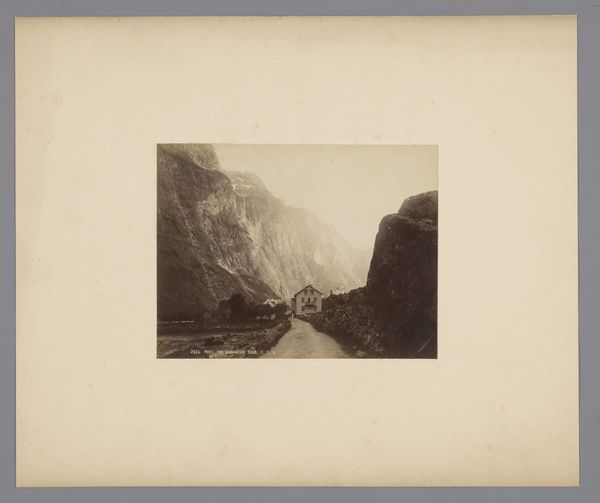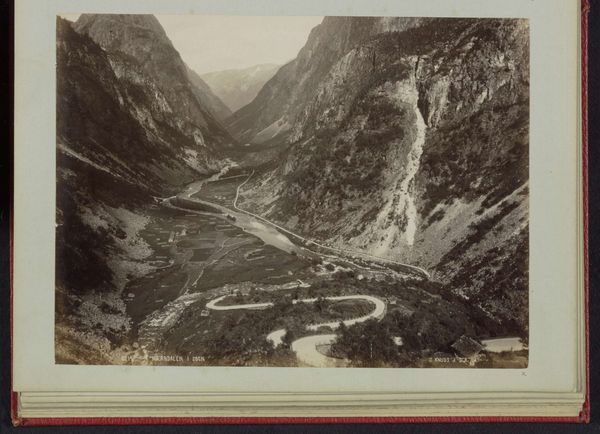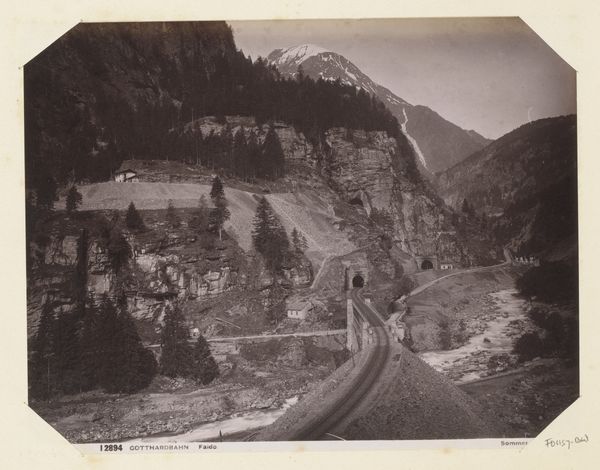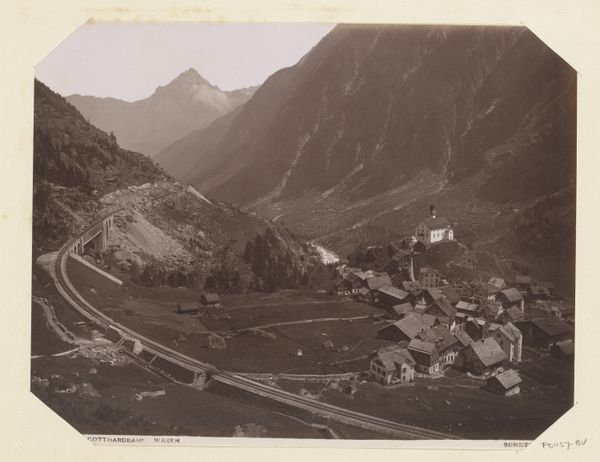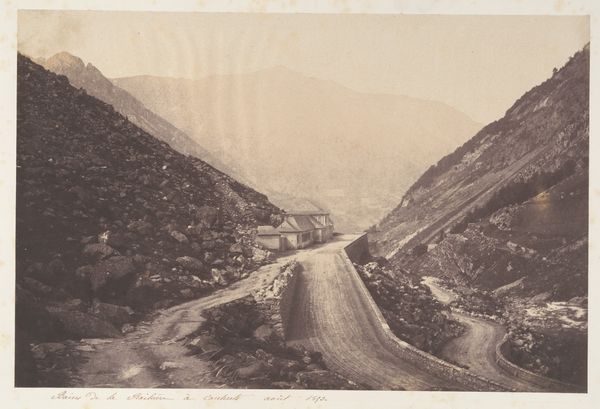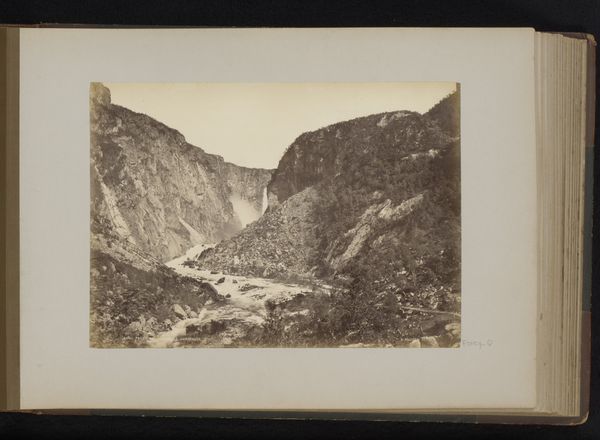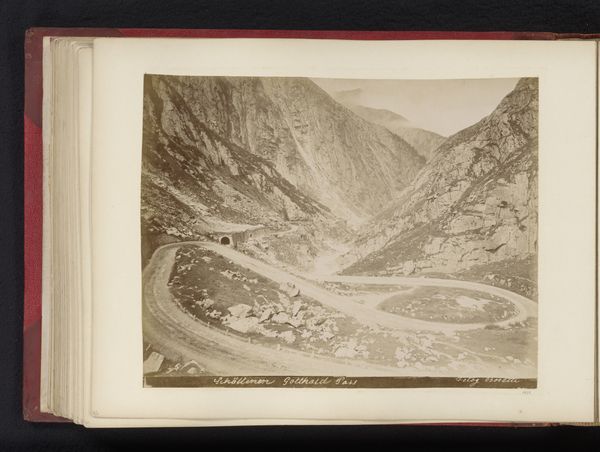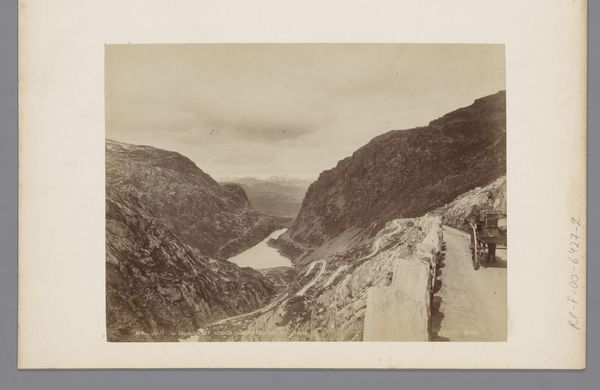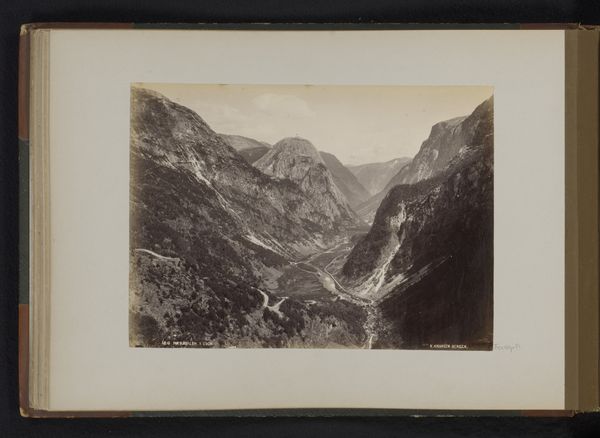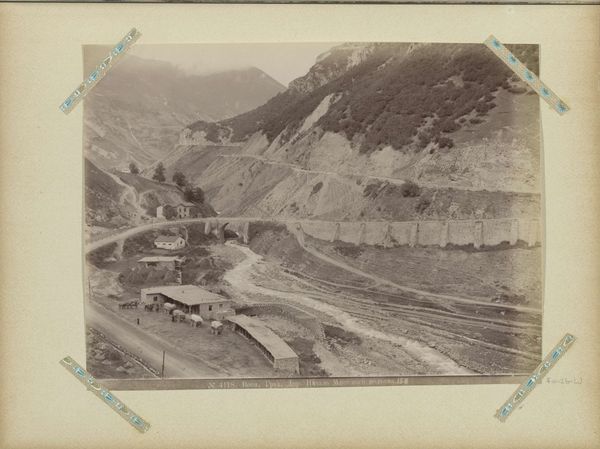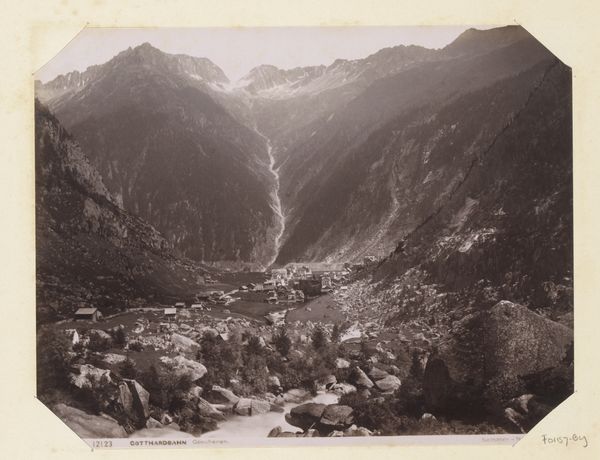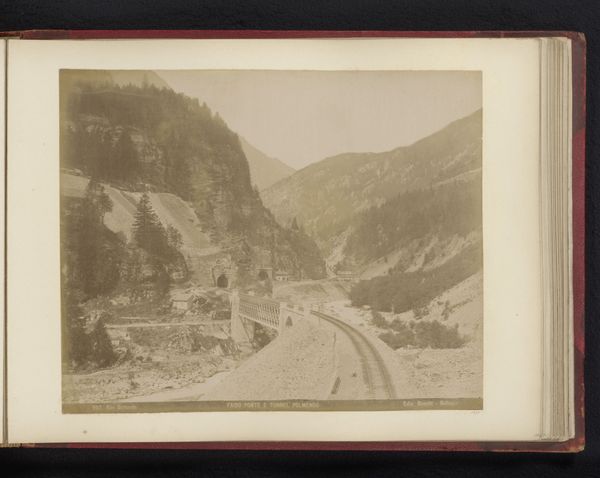![Tunnel "Das Urnerloch" [Schöllenen?] en brug over de Reuss, Gotthardpas, Zwitserland by Gebrüder Wehrli](/_next/image?url=https%3A%2F%2Fd2w8kbdekdi1gv.cloudfront.net%2FeyJidWNrZXQiOiAiYXJ0ZXJhLWltYWdlcy1idWNrZXQiLCAia2V5IjogImFydHdvcmtzL2JlODQzNDlhLTE1ZDEtNDY2Zi1iMmM1LTQzOWU3ZjJiM2FkZi9iZTg0MzQ5YS0xNWQxLTQ2NmYtYjJjNS00MzllN2YyYjNhZGZfZnVsbC5qcGciLCAiZWRpdHMiOiB7InJlc2l6ZSI6IHsid2lkdGgiOiAxOTIwLCAiaGVpZ2h0IjogMTkyMCwgImZpdCI6ICJpbnNpZGUifX19&w=3840&q=75)
Tunnel "Das Urnerloch" [Schöllenen?] en brug over de Reuss, Gotthardpas, Zwitserland c. 1900 - 1925
0:00
0:00
gebruderwehrli
Rijksmuseum
Dimensions: height 161 mm, width 216 mm
Copyright: Rijks Museum: Open Domain
Editor: We're looking at "Tunnel 'Das Urnerloch' [Schöllenen?] en brug over de Reuss, Gotthardpas, Zwitserland", a gelatin silver print by Gebrüder Wehrli, dating from around 1900 to 1925. It’s quite striking – the overwhelming scale of the mountains surrounding this tiny bridge is pretty impressive. What formal elements stand out to you in this image? Curator: The formal organization pivots around a strong contrast between light and shadow. Note how the steep rock faces create a chiaroscuro effect, directing the viewer’s eye towards the center. This interplay of light emphasizes the texture of the rock formations and also serves to compress the space. The horizontal lines of the bridge offer a stark contrast to the verticality of the landscape. Editor: I see what you mean. The bridge and road are so small compared to the cliffs that they almost disappear. What does the composition tell us about the photographers’ artistic intent? Curator: Consider how the composition is carefully framed. The rigid geometry of the tunnel and bridge offer a controlled and human element against the sublime, untamed, and almost overwhelming power of nature. Does the contrast resonate with Romantic ideals? The meticulous detailing of the rock and bridge further accentuates their contrasting nature through light and form. What theoretical frameworks might help us analyze this tension? Editor: Semiotics, perhaps? The bridge could symbolize human ingenuity in the face of nature’s grandeur. This photograph presents such a complex interaction between mankind and environment. Curator: Precisely. Not only that, but the grayscale contributes to the composition by emphasizing line, form, and texture rather than tonal depth to the point where it evokes a watercolor aesthetic. Have we observed the cultural function that photography occupies with images like this one? Editor: Well, looking at this artwork, it strikes me as more than just documentation, it has undeniable aesthetic value. I had never considered the interplay of form and light so central to understanding a photograph like this. Curator: Indeed, understanding the mechanics of the visual components is key. Now you can appreciate the narrative generated by these relationships.
Comments
No comments
Be the first to comment and join the conversation on the ultimate creative platform.
